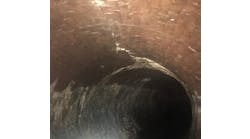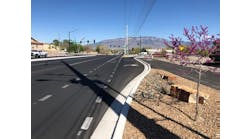The U.S. Environmental Protection Agency (EPA) has emphasized Stormwater and Combined Sewer Overflow (CSO) Control Policies in the National Pollutant Discharge Elimination System (NPDES) and Municipal Discharge permitting processes. These policies have been implemented to promote attainment of minimum water quality standards in the receiving waters affected by wet-weather municipal discharges. In many cases, the Stormwater and CSO Policies and NPDES permitting processes require municipalities to develop and implement Best Management Practice (BMP) control strategies and discharge monitoring programs for planning, compliance, and reporting purposes.
The regulatory focus on long-term Stormwater and CSO control programs increases the need for accurate flowrate measurement and monitoring systems that may be deployed at multiple locations within municipal networks. Flow monitoring data collected from key locations over a range of wet-weather collection system flows frequently reveal significant differences in comparison to flow predictions resulting from hydraulic system computer models such as the Stormwater Management Model (SWMM). This real-world flow data is valuable for verification of the overall modeling approach and can highlight specific collection system features that may require more detailed analysis for appropriate BMP implementation.
Real-world flow data is also useful for calibration of computer model flow network response to wet-weather events. However, high-accuracy flow measurements are critical to meaningful system modeling and analysis, since the propagation of uncertainties (errors) through model flow networks can rapidly grow to unmanageable proportions.
Ultrasonic transit-time flowmeters can be used to good effect for meeting specific site monitoring and documentation requirements by providing highly accurate and continuous flowrate measurement during dry- and wet-weather conditions. Transit-time flowmeters include bi-directional (reverse flow) measurement capability and can be configured for multiple acoustic paths, making them highly accurate over a wide range of changing water level and flow conditions, as well as in locations where other measurement methods cannot reliably function.
In addition to providing the data needed for system modeling and evaluation, accurate flow information is valuable for regulatory reporting and compliance documentation; planning and evaluation of Stormwater & CSO control alternatives; alerting operators to CSO system malfunctions; optimizing operation of treatment facilities; allocating contributory system user costs and billings; and pacing chemical treatments for discharges.
Requirements for CSO and Stormwater Flowmeter Systems
Flowmeters for Stormwater and CSO monitoring typically are required to operate under both free flowing (i.e., in partially filled conduits or open channels) and surcharged (pressurized) conditions. Additional measurement requirements can arise at locations subject to backflow, reverse flow, or tidally governed hydraulics. The need to accurately determine flowrates over such a wide range of conditions places stringent requirements on the methods and technology that can be successfully utilized in these applications. Methods that derive flowrate from measurements of water level only (using stage vs. flowrate relationships) are simply not capable of meeting these requirements.
A more suitable approach is developed from consideration of the hydrodynamic continuity equation, with a derived principle that applies to flow through any conduit section; i.e., flowrate is equivalent to multiplication of a true average current profile velocity times the cross-sectional area of the flow. Since flows in collection system pipes and conduits range from partially full through surcharged conditions, measurement of water level is used to determine the cross-sectional flow area (based upon the geometry of the conduit), and water velocities are measured to estimate the corresponding true average flow velocity.
Since flow velocity profiles in surcharged conduits are significantly different than under free-flow conditions, a “compound” approach that automatically selects an appropriate integration method for computing representative velocity profiles and resultant averages will provide better flowrate accuracy. Conduit sections that are well removed from upstream bends, obstructions, or other flow disturbances will exhibit “fully developed” flow velocity profiles. The multiple-path transit-time method can provide accurate flowrate measurement even at sites where flow profiles are not well developed.
The Accusonic multiple-path ultrasonic transit-time flowmeters discussed here have been installed worldwide for high-accuracy flow measurement in more than 2,000 large pipes, open channels, and collection system project applications. The flowmeters, which operate in clean water or raw sewerage environments, have been in use since the 1970s. Many Accusonic systems have been installed in large sewers and collection system pipes and channels, as well as at wastewater treatment plants for high accuracy and reliable flow measurement. A number of US and Canadian municipalities have established real-time monitoring networks comprising multiple flowmeter sites using Accusonic flowmeter systems.
Because Accusonic flowmeters use relatively high-power ultrasonic pulses for flow measurement, they are capable of operating in large pipes and channels flowing with relatively high concentrations of suspended sediments, as is common in sewer flows. Accusonic has developed proprietary ultrasonic signalling techniques that maintain good signal strength under sewerage conditions and are certified for intrinsically safe installation in NEC Class I, Division 1 explosive atmosphere locations.


